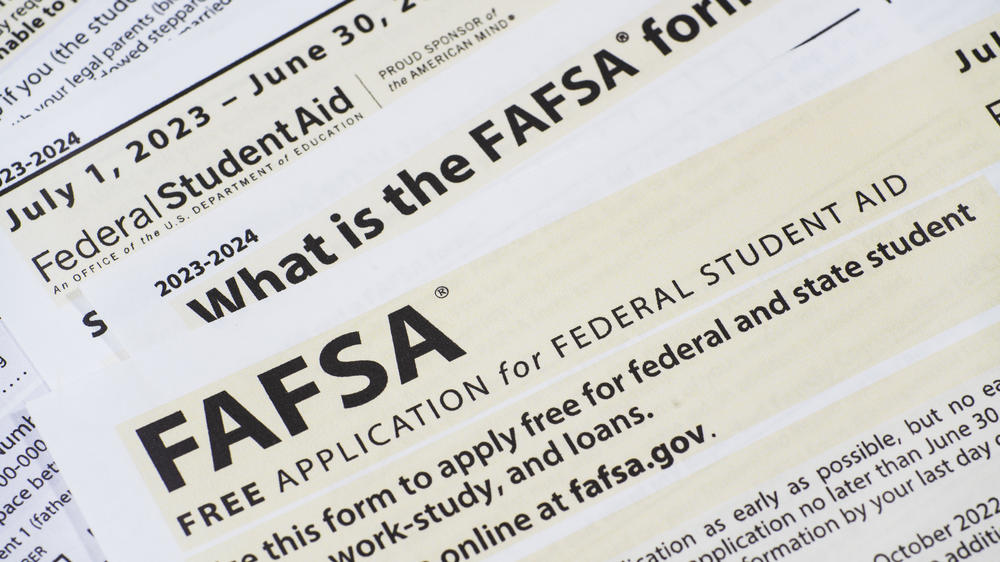Section Branding
Header Content
This year it's a slow crawl to financial aid packages for students
Primary Content
Prospective college students are one step closer to financial aid packages this week, but the timeline is still months behind.
This "is definitely one of the stranger years that we've had," says Keith Raab, director of financial aid at Oregon State University.
That's because, this year, the U.S. Department of Education gave the federal student aid application, or FAFSA, a long-awaited makeover. The goal of the revamp was to simplify the form, and when it works, it is easier to fill out. Unfortunately, the effort has been marked by delays and bugs that have caused confusion in higher education and in high schools – not to mention the millions of students waiting to learn how much money they'll have for college.
Last week marked the deadline set by the Education Department to send colleges the data from the new form. Once colleges get that data, they can start the process on their end to send out aid offers. In a normal year, this step of the process happens in January.
Schools say they are getting some of the FAFSA applications from the department. But far fewer than they expected – or need – to get aid packages out to students.
"The first day," Raab says. "We received eight."
That's eight individual applications, out of the 90,000 or so that Oregon State expects to process this year. By the end of the week, Raab said, they had received closer to 20, but there's a long way to go.
"Getting 10 or 20 lets us start to look at them," he says. "But it doesn't do much for us."
Other schools are in the same boat, by the end of last week the University of Michigan had received 18 applications.
Although, things could be turning a corner: last week the University of California San Diego received 25 applications, but early this week the total grew into a few thousand. The hope is that each week the numbers will ramp up, but it's yet to be seen how fast.
While colleges wait for more data, high school students remain stuck. In past years, they would already have their acceptances, scholarship information, and financial aid offers in hand.
"It's been definitely a tough situation to navigate," says Beatriz Guevara, a high school counselor at Bethesda Chevy Chase High School in Bethesda, Md.
She works primarily with first-generation and low-income students, and says these extra hurdles have really stopped her students in their tracks
"Part of it is just students getting accepted, but also they need the money," Guevara explains. "That is going to make the school a reality for them."
Vanessa Cordova Ramirez, a high school senior in New York City says that, for her, aid is everything at this point. She's already been accepted to her top choices.
"It's really just now deciding, like, what fits best for me," she says. "What can I afford? What's going to benefit me ... in the long run?"
Cordova Ramirez is from a mixed status family – meaning she is a citizen, but her parents don't have legal status in the U.S. For a while, this year's FAFSA didn't work for them. The Education department says it's cleared up the issue, but acknowledges that for some it's still not working
Cordova Ramirez had to go back and file the old-fashioned way: "We're going to pray that everything goes well because we did everything ... through paper," she says. "We're just hoping, either electronically or through the paper, that any of them would work."
And all this confusion affects not only the students coming out of high school: Every college student who gets financial aid has to resubmit the FAFSA every year. And so, OSU's Raab has one final piece of advice: If you're going back to school in the fall, fill the FAFSA out now.
Bottom Content




